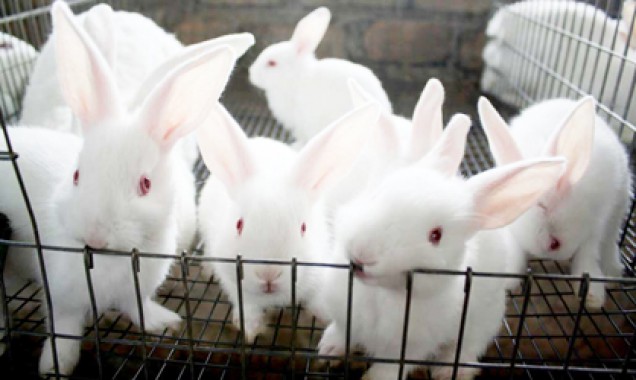




















Wednesday, Oct 20, 2021 07:45 [IST]
Last Update: Wednesday, Oct 20, 2021 02:10 [IST]
Food security is a great challenge globally. Day by day, the cultivable land and grazing field decreases due to urbanization or industrialization. One of the greatest challenges is to fulfil the demand of the population. In developing countries such as India, where enormous meat shortage exists, the potential for rabbit production is greater.
As rabbit husbandry is new to us, it has a powerful impact on the field of poor especially in the areas where agriculture is the primary industry, where most people depend on farm and livestock. Rabbit are commonly raised around the world to sell their meats which is considered as delicacy because of its high palatability and nutritive value. There is no religious taboo or social stigma attached to the consumption of rabbit meat and also for gathering fur, skin and wool. As rabbit wool has a good market around the world, breeds like German angora has got highest wool production efficiency. The main commercial aspects of rabbit farming are the fast breeding nature of the female requirement and high demand for rabbit meat. Special fodders are not mandatory to feed rabbit as they can be fed directly from the green available in your surroundings and vegetable wastes from the kitchen. Since rabbit are small sized animals, not much space is required to set a rabbit farm, these animals adapt easily to most climatic condition but certain specific measures need to be taken for responsible commercial farming.
Rabbit farming can also provide a very valuable source of income in the rural India. Additionally, a large number of rabbits are also required for medical and cosmetic research centres every year. Some advantages of rabbit farming are
(1) In general rabbit breed eight times in a year
(2) Female may produce eight young’s which attain sexual maturity in four to six months. Life span of rabbit is about seven to eight years
(3) Slaughter weight of rabbit is about 2 kg which can be achieved in 12 to 15 weeks
(4) Rabbit has got fast reproductive process and are able to remate within 24 hours of giving birth (kindling). Their gestation period is about 31 days.
(5) They consume a large amount of forage from diverse origins and can be repaired on small amount of costly concentrates.
(6) They can be reared in the kitchen garden /backyard of farmer’s house.
(7) Apart from providing meat and wool, rabbit also provide income from manure, etc.
(8) Residual feed together with rabbit is highly suitable for vermicompost, which in turn provide excellent manure for fertilizing the field.
(9) Initial investment cost for rabbit farm or rabbitry is low.
(10) Quick return of invested money, ie, six months after the establishment of farm.
Proper ventilation is necessary to control the temperature and to remove ammonia. The optimum temperature for rabbit rearing is around 10 -25 degree Celsius. Before opening a rabbit farm, it is necessary to take training on rabbit farming.
Rabbit farming is a good source of income over the years. It provides income from small investment within a short period of time. Moreover, rabbit farming is agricultural-based activities. Housing plays an important role in rabbit farming, it depends upon the climatic, location and size of the farm.
